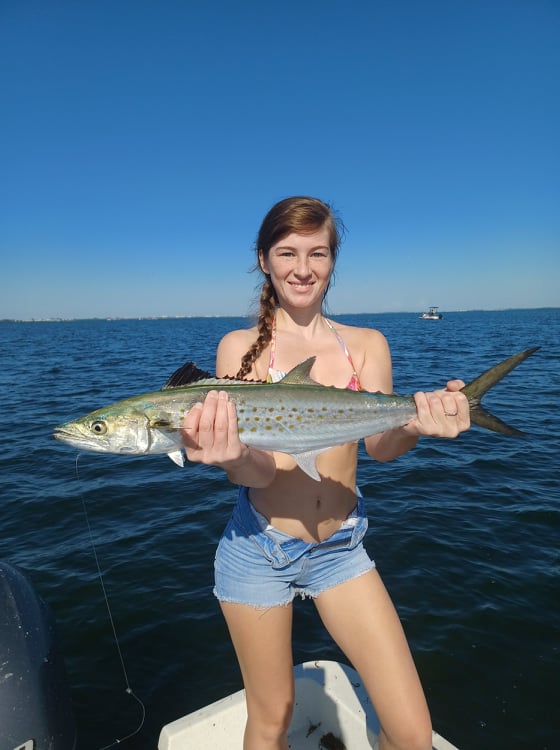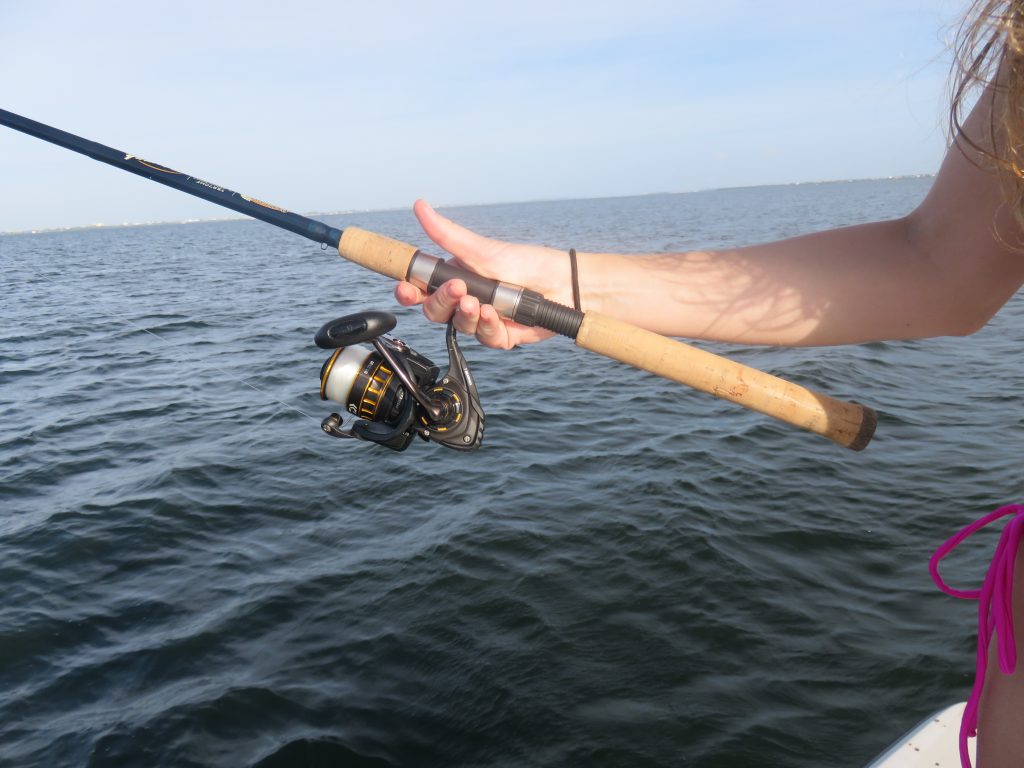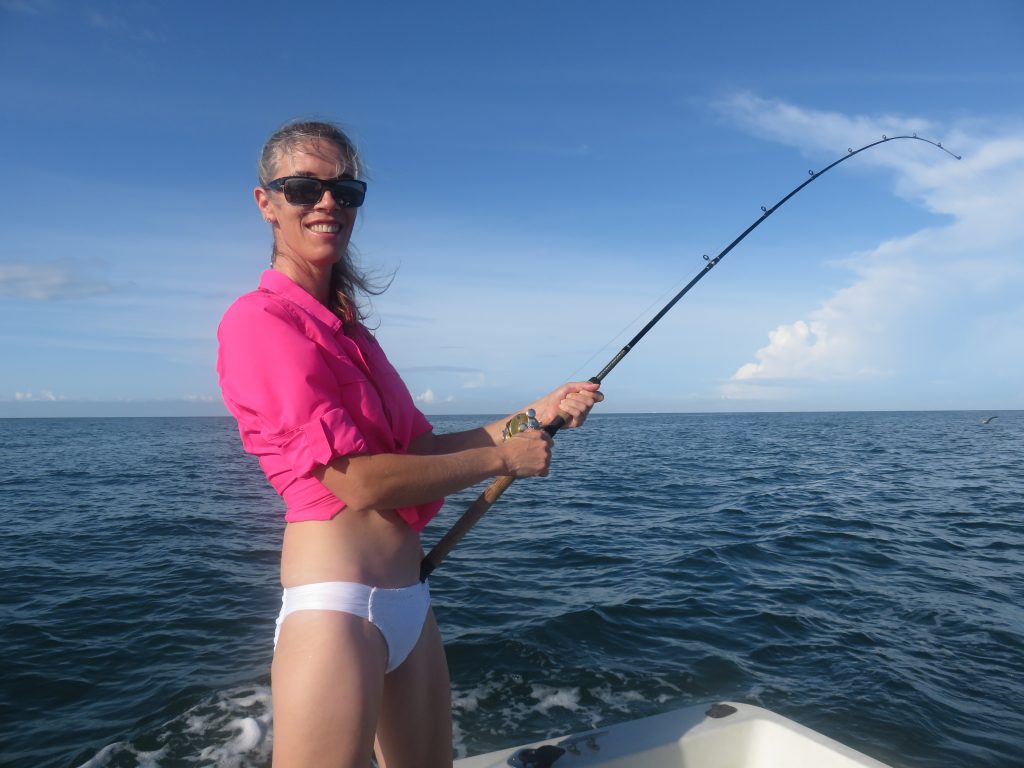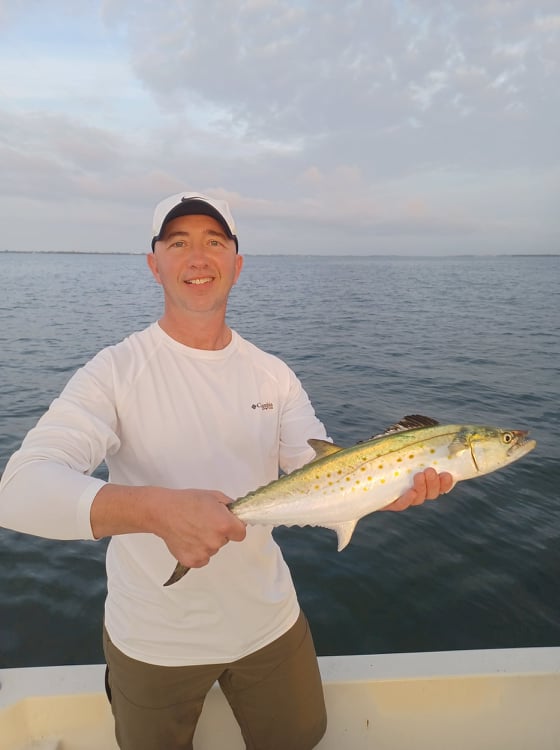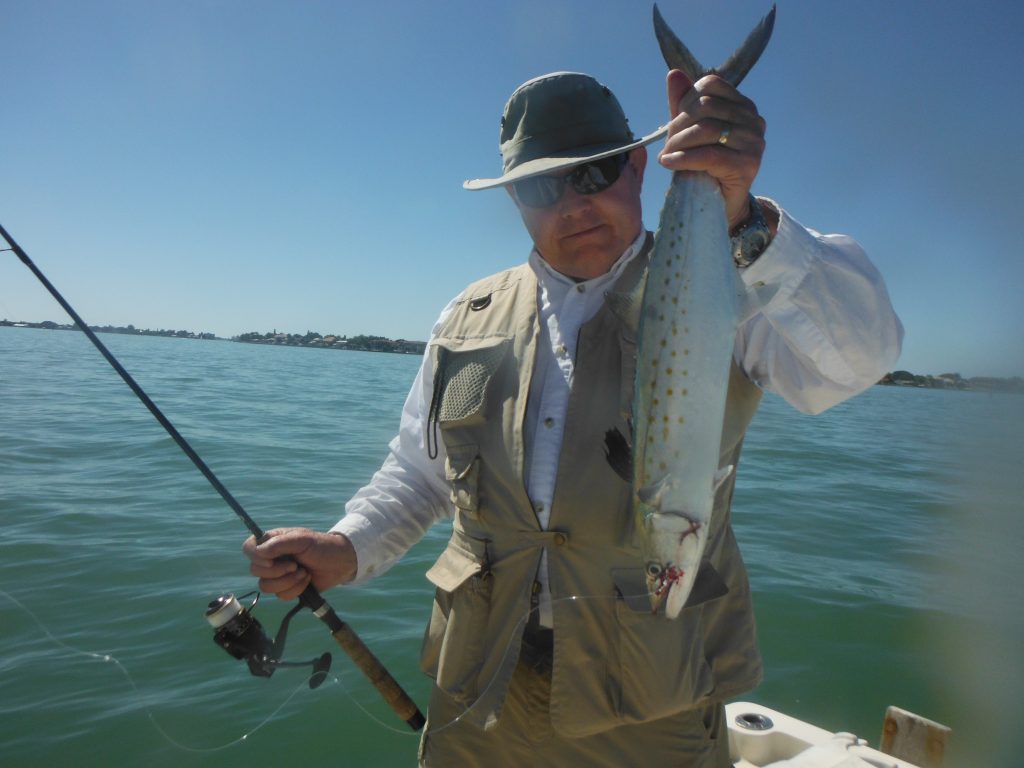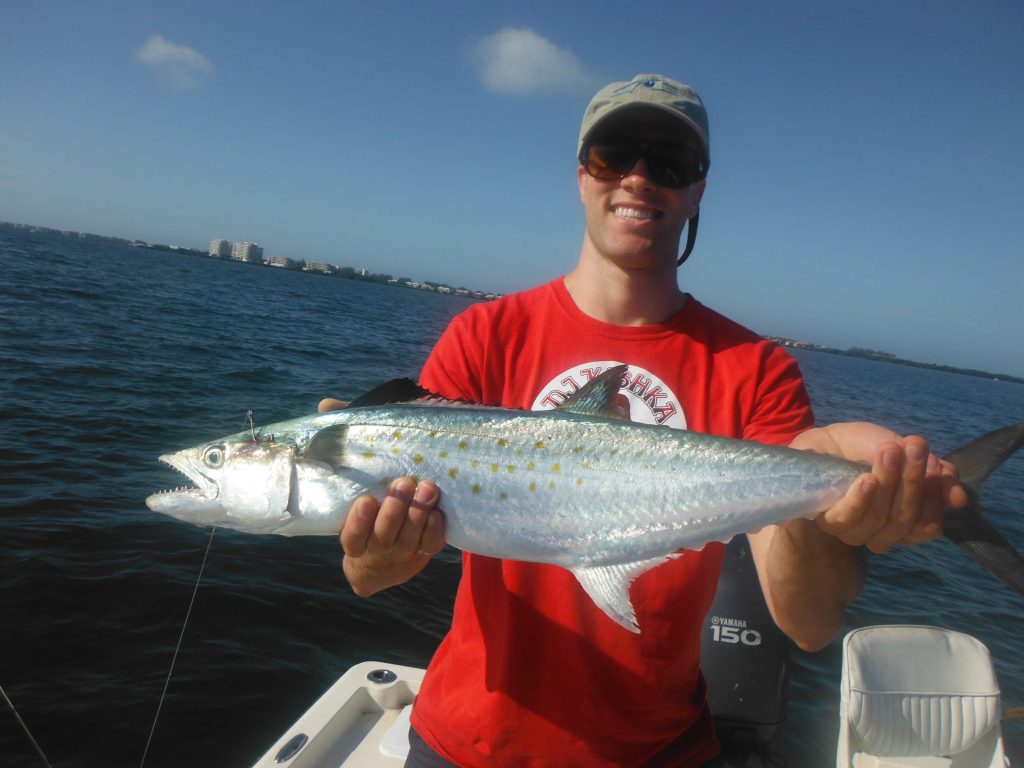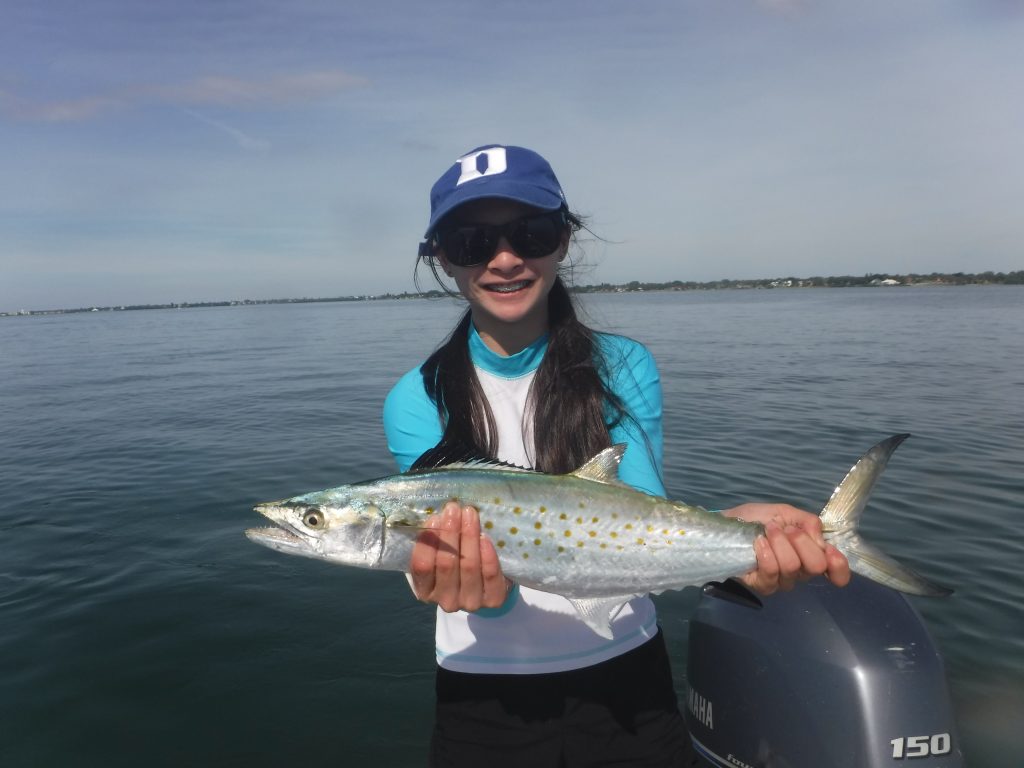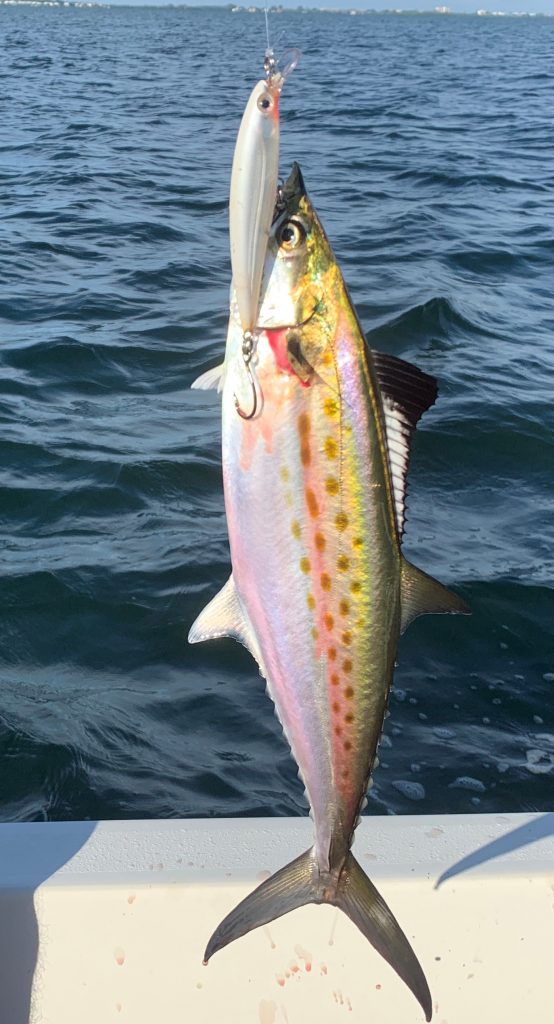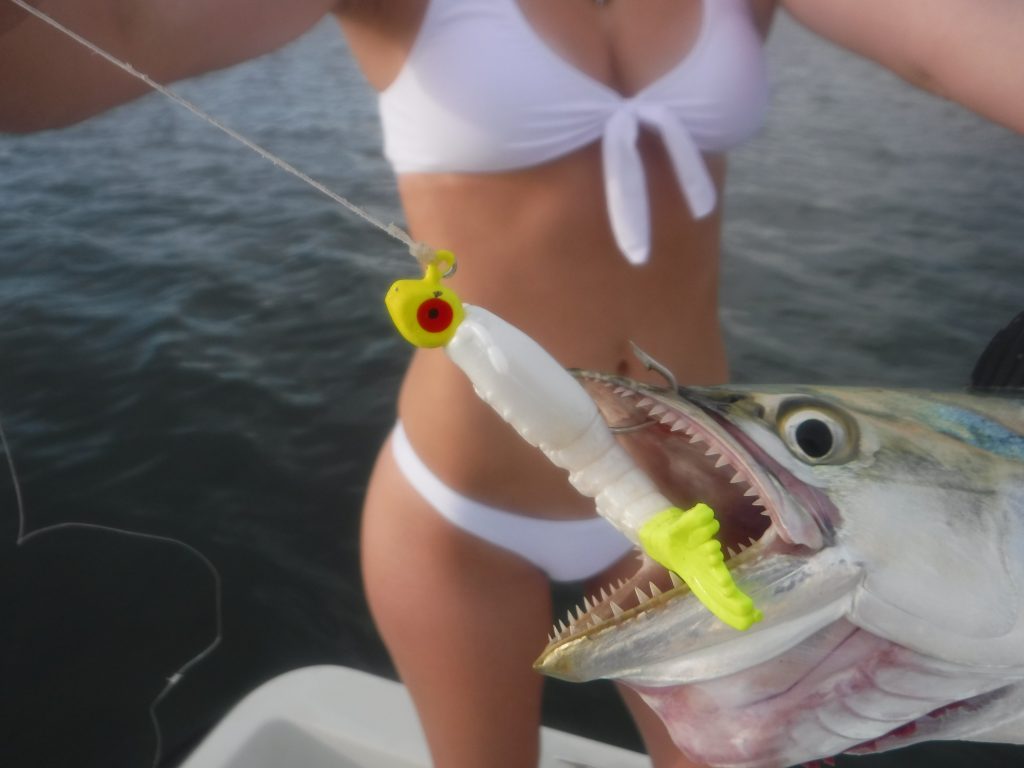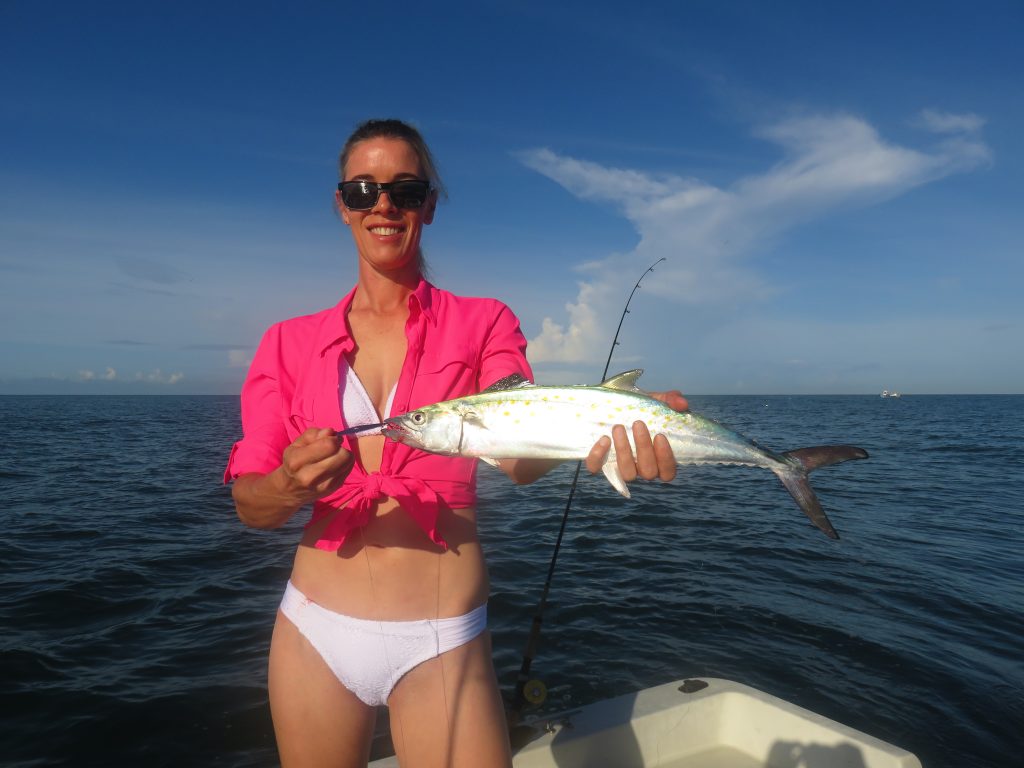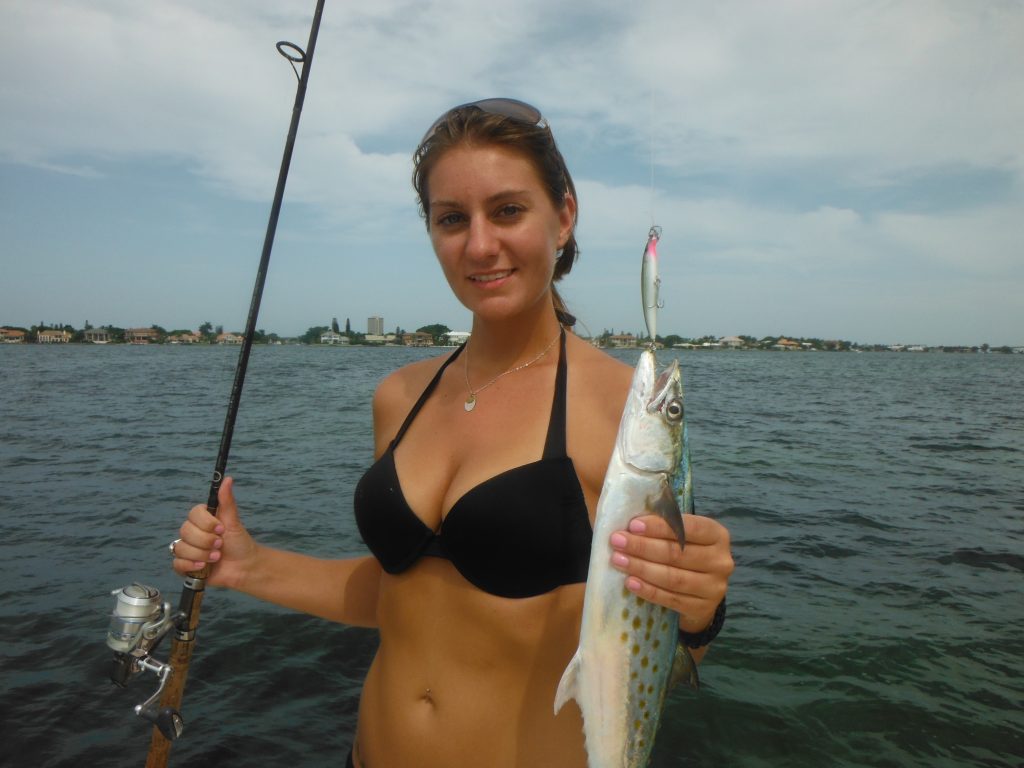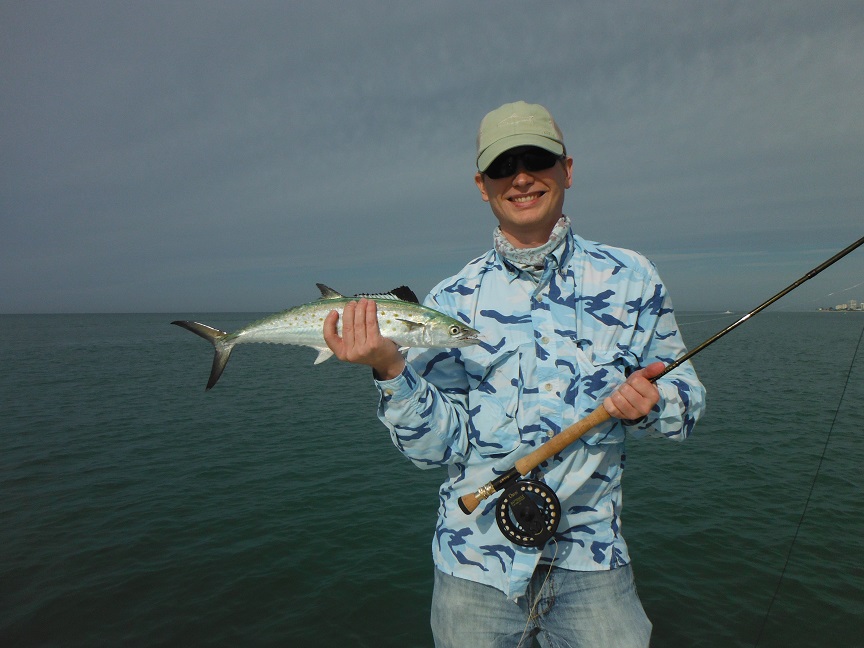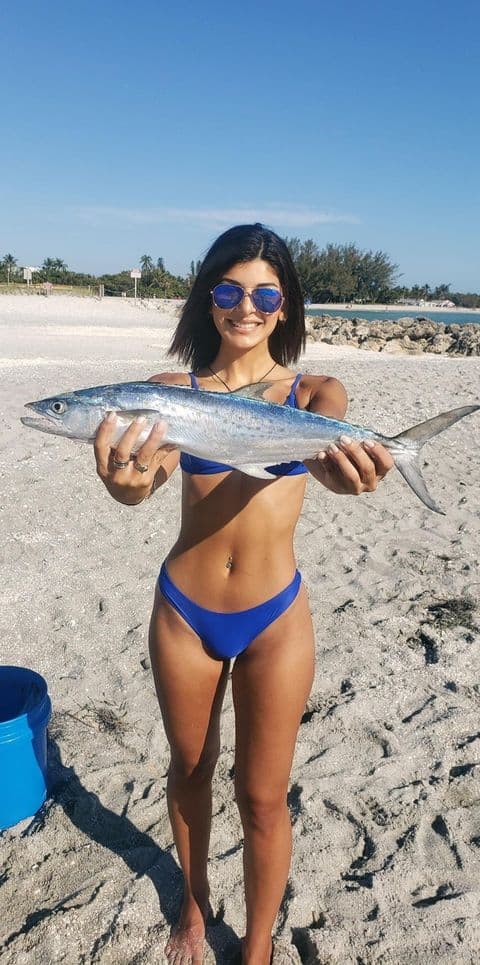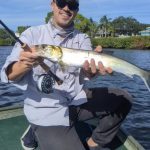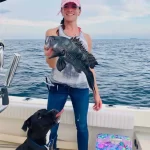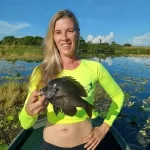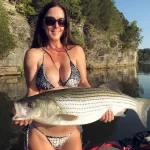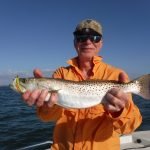How to Catch Spanish Mackerel-Tips from a Florida Captain!
In this article I will thoroughly cover how to catch Spanish mackerel. Spanish mackerel are a very popular inshore saltwater game fish. They are found all over the world in temperate waters. Spanish mackerel are a beautiful fish that fight hard and taste great when eaten fresh.
My name is Capt Jim and I am a charter boat captain in Siesta Key, Florida. I fish for a variety of species, but I especially love to target Spanish mackerel. They put up a terrific fight on light spinning tackle, often making blistering runs, especially with fish over three pounds.
Best Spanish mackerel fishing tackle
Anglers can use a variety of fishing rods and reels when fishing for Spanish mackerel, it really depends on the technique being used. The two primary techniques are casting and trolling. A light spinning rod is best for casting while a light conventional rig is best for trolling.
I use the same inshore spinning rod and reel when fishing for Spanish mackerel that I use on my inshore charters. It is a 7′ medium light rod with a fast action paired with a 2500 series reel. This combo will cast lures and light live baits well while still handling a good sized Spanish mackerel. I am currently using St Croix Triumph rods with Daiwa 2500 Black Gold reels. I prefer monofilament line as I like the stretch when fishing for Spanish mackerel. 10 lb test is a good all round choice. Below is a link for anglers who would like to shop for this equipment.
Shop at Amazon for a Daiwa Black Gold reel and St Croix Triumph 7′ MF rod spinning combo
A light conventional outfit is perfect for anglers who troll for Spanish mackerel. This type of reel holds a lot of line and can better handle the strain of dragging a planer or lure. Also, it is nice if a larger fish such as a false albacore or king mackerel is hooked.
Shop Amazon for Penn conventional rod and reel combinations
Rigging up for Spanish mackerel fishing
Spanish mackerel have a mouth full of razor-sharp teeth! This requires some attention when rigging up for these fish. Despite the risk of cut-offs, I rarely use wire leader. Spanish mackerel prefer clear water, and this is certainly true in Sarasota, Florida where I fish. Anglers must decide if the risk of cut-offs justifies the extra bites, it is a trade off.
I use a 24” piece of 40 lb flourocarbon leader between my running line and hook or lure. I use lures that are long as Spanish mackerel usually hit the back half of the lure. I attach the leader using a double uni-know, not a swivel. The swivel will actually draw strikes, resulting in the mackerel “freeing” the one that is hooked. Anglers can certainly use pre-rigged wire leaders, especially if the water is murky or in a feeding frenzy.
Where to catch Spanish mackerel
Spanish mackerel can really be found anywhere. This makes it both fun and challenging! Top spots include inlets and passes, large open flats, and the inshore waters of the Gulf and Atlantic Ocean. In the South, mackerel are usually found on flats with some grass or vegetation as this is where the bait is. Inlets and passes are good spots as they have current and bait.
In the open waters, anglers either run and look for birds and breaking fish or fish ledges, reefs, and wrecks. While Mackerel do not really relate to structure, the bait that they feed on does. Therefore, artificial reefs, hard bottom areas, and wrecks are top spots. Anglers will also usually score by finding “bait bass’ or other large schools of bait. Spanish mackerel will usually be close by.
Spanish mackerel prefer water temperatures between 68 and 75 degrees. However, they will be found in a variety of temperatures. The overriding factor is bait, mackerel, just like other species, will not be far from the forage that they feed on.
Spanish mackerel fishing techniques
As mentioned earlier, the two basic methods used by anglers fishing for Spanish mackerel are casting and trolling. I will consider drifting to be casting as well. Both of these techniques are productive and fun.
Casting for Spanish mackerel
While trolling is productive and efficient, I prefer casting lures and baits when fishing for Spanish mackerel. Anglers get to experience the strike and initial run, especially when using light tackle.
Spanish mackerel fishing video
One of the enjoyable aspects of fishing for Spanish mackerel is that it is often a visual situation. Mackerel will herd helpless bait fish up in the water column, trapping them on the surface. Birds will get in on the buffet. The result is water that is actually frothing, especially on a calm day. Just about any lure or bait cast into the fray will get hit immediately! This can occur in the inshore bays, passes and inlets, and open waters of the Gulf of Mexico and Atlantic Ocean.
Spanish mackerel can certainly be caught when they are not seen feeding on the surface. In fact, most are caught this way. In Florida where I fish, drifting is a preferred method. As the boat drifts along with the wind and tide, anglers cast lures or free line live baits behind the boat. Once fish are located, the boat can be anchored or the area re-drifted again. This works very well in inlets and passes as well as the open flats. Spanish mackerel are usually found in the upper third of the water column, regardless of the depth.
When drifting or casting live or cut bait, I use a #1/0 long shank hook most of the time. The long shank acts as a leader and drastically reduces cut-offs. I use both shrimp and live bait fish on my charters. Anglers fishing for Spanish mackerel on the east coast often use cut bait, and these hooks work well in that application, too.
Top Spanish mackerel fishing lures
I really enjoy casting artificial lures when fishing for Spanish mackerel! The strikes can be explosive and it is just fun casting for them. Spanish mackerel are very aggressive and most often respond to a fast, erratic retrieve. This mimics a wounded bait fish, often triggering a strike.
Anglers do not need a large selection of lures when fishing for Spanish mackerel. I really only use three different lures, a plug, a spoon, and a jig. I will describe these in detail below.
Rapala X-Rap
My absolute favorite “go to” lure when fishing for Spanish mackerel is the Rapala X-Rap Extreme Action Slashbait. It is a long slender plug in the ‘jerkbait” family. It has a very erratic action when cast or trolled. It works best with hard twitches followed by a pause. This is often when the mackerel strikes, as the bait appears to be helpless. White (Ghost) is my favorite color. I use size 08 when the bait is small and size 10 if it is larger. Note the single hooks, they make handling fish MUCH safer!
Kastmaster spoon
Spoons are excellent mackerel fishing lures! They cast a long distance and realistically imitate a wounded bait fish. Again, a fast, erratic retrieve usually works best. I use the Acme Kastmaster spoon. I like the long, slender design, it really casts well, even into the wind. The hook-up ratio is good and it is also available in a single hook version. The ¾ ounce model is a good all-round size.
Jig and grub
The jig and grub combo is arguable the top inshore saltwater fishing lure. It is economical and versatile and will catch just about every species that swims. The jig head is adorned with a soft plastic body that imitates the local forage. For me in Florida, that is often a shrimp. Paddle tail baits are popular and have great action. These lures are relatively inexpensive, which can be a benefit when Spanish mackerel fishing. I like the Gulp line of baits.
Trolling for Spanish Mackerel
Trolling is an extremely effective technique for a variety of species, including Spanish mackerel. It allows anglers to cover a lot of water in search of fish while presenting multiple baits at different depths. Lures are most often used, especially given the speeds that Spanish mackerel like the lures presented.
The most effective trolling speed is from 5-7 knots. This results in impressive strikes. I use spoons for the most part, though I will troll Rapala X-Raps (other shallow diving plugs will produce) in the inshore waters and if I see fish busting on top.
Anglers have a couple of choices to get the lures down in the water column. The easiest method is to use a plug with a lip on it. The lip, along with the speed, will determine how deep the lure dives. Anglers can cover the water column simply by changing lures with no other hardware required.
Trolling for Spanish mackerel with spoons
Spoons are terrific trolling lures for Spanish mackerel and other species. There are spoons specifically designed for trolling. They are long and slender and will troll pretty quickly. In my opinion, the discussion starts and ends with Clark spoons. They came in a variety of sizes to match the bait. Sliver is the only color needed. Anglers do need to get them down in the water column as they will quickly rise to the surface.
There are two basic methods to accomplish this. The easiest method is to use an inline sinker, 2-3 ounces works well. A 10′ leader connects the spoon and the sinker. The rig is let out behind the boat and trolled at 5 knots or so. A plug with a shallow diving lip can be used as well.
Trolling for Spanish mackerel video
Planers are also used to get the spoons down to the desired depth. They are clever devices that work like the lip on a plug. However, when a mackerel strikes, the planer “trips”, allowing the anglers to fight the fish without the drag of the planer. A 20′ leader connects the spoon and planer. The fish must be hand lined in that last 20′. A #1 planer will dive 5-7 feet and a #2 planer will dive 12-15 feet.
Reefs, wrecks, bait schools, and breaking fish are top spots to troll for Spanish mackerel. When encountering breaking fish, it is best to skirt the edge of the fish as opposed to driving right through them. The rule of thump when putting out lines is to run the deeper lines closest to the boat and shallowest line furthest back. I like to “count” the lures back, keeping them separated.
Fly fishing for Spanish mackerel
Fly fishing for Spanish mackerel is terrific sport! Their habit of feeding aggressively on the surface makes them prime candidates for anglers who like to fly fish. Blind casting while drifting will produce as well. Spanish mackerel make savage strikes and put up a terrific battle on a fly rod.
An 8wt outfit with an intermediate sink tip line is a good all round outfit. The leader should be 8′ long with a 30 lb or 40 lb bite tippet. Fly selection is basic with white bait fish patterns such as Clouser Minnow and D.T. Special flies working well. Fast, aggressive strips work best and make sure there is some backing on the reel!
Fishing for Spanish mackerel from shore
Anglers do not need a boat in order to enjoy fishing for Spanish mackerel. They are a staple of those fishing from piers all along the coast. Jetties are good spots as well. Anglers surf fishing routinely catch them as well.The same techniques, lures, and baits used from a boat (other than trolling) can be used by anglers fishing from shore.
Fishing for Spanish mackerel from piers and jetties
Piers are excellent spots to fish for Spanish mackerel. The structure attracts bait which in turn attracts Spanish mackerel. This is often an “opportunistic” situation as a school of fish moves through. Successful anglers are rigged and ready when this occurs. Lures are used in this situation with a heavy spoon being a good choice.
Anglers can fish with live and cut bait from piers as well. This works well when they are not showing but are in the area. Cut and live bait also produces other species, filling in the time between Spanish mackerel.
Jetties are similar to piers, though the angler in much closer to the water. One main factor is current. It can be difficult to fish when the tide is running hard. Plugs and spoons cast parallel to the racks or out toward breaking fish will produce. Slack tides early and late in the day are prime times to fish.
Surf fishing for Spanish mackerel
Anglers surf fishing for Spanish mackerel score on these game fish from Texas to New England. Most are caught by anglers cast lures as schools of fish move through. A few will take live or cut bait fished on the bottom, however their habit of swimming high in the water column limits this.
In conclusion, this article on how to catch Spanish mackerel will help anglers appreciate these underrated game fish!

